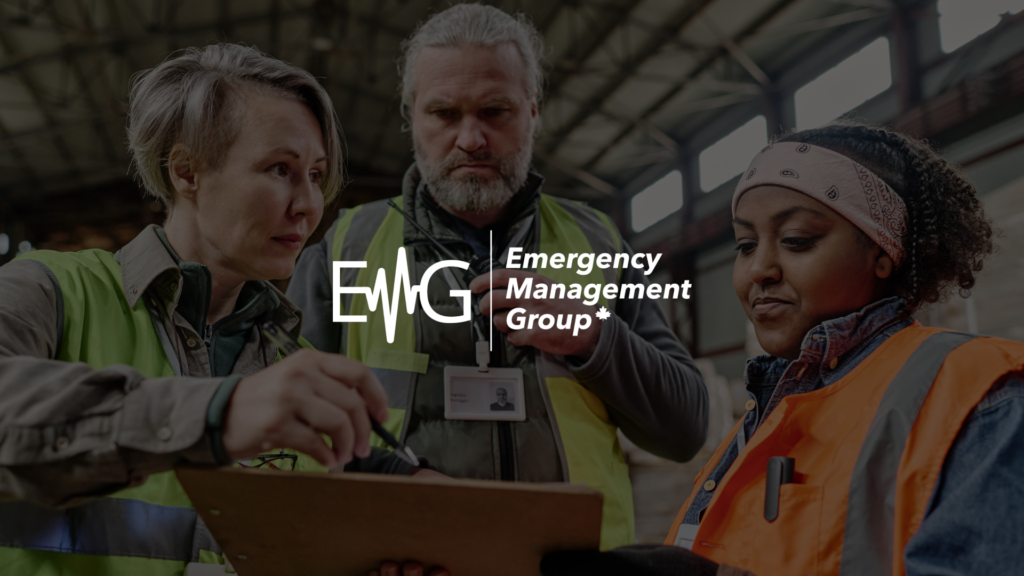When we think of disasters—whether natural disasters like hurricanes or floods, or human-caused incidents such as cyberattacks or active threats—we often assume these events happen “somewhere else.”

This dangerous mindset, summed up by the phrase “It’ll never happen here,” leads many organizations to let their guard down, missing critical steps that could save lives, protect property, and maintain business operations. In reality, low-probability, high-impact events can strike anywhere, anytime, leaving unprepared organizations in chaos.
In this post, we’ll explore why organizations underestimate these seemingly rare disasters, debunk some of the most common myths about disaster preparedness, and provide tips on how to overcome this mindset.
1. The “Low-Probability, High-Impact” Trap
Many executives and managers focus on everyday operational concerns—cash flow, staffing, marketing—and give little thought to events they perceive as unlikely. Hurricanes in landlocked areas? Unheard of! Earthquakes on the East Coast? Impossible! An active threat or civil unrest in a quiet suburb? Can’t imagine it.
Unfortunately, real-world data shows that “rare” disasters do happen in places we don’t expect:
- Hurricane Hazel (1954) inflicted catastrophic damage in Ontario, Canada—an area many considered safe from tropical storms.
- Earthquakes in Eastern Canada have been recorded historically, despite the popular notion they only occur in British Columbia.
- Cyberattacks on small businesses have surged in recent years, refuting the myth that hackers only target large corporations.
When organizations dismiss these risks, they fail to plan adequately—leaving themselves exposed to severe consequences if the unexpected does occur.
2. Common Myths That Perpetuate Complacency
Myth #1: “We Haven’t Had a Major Event in Years, So We’re Safe.”
Just because a large-scale emergency hasn’t happened recently doesn’t mean it won’t. Past occurrences—whether they were five years or fifty years ago—provide critical lessons in identifying vulnerabilities. Short memories are often the biggest obstacle to preparedness.
Myth #2: “Insurance Will Cover Everything.”
Insurance is crucial for financial recovery, but it won’t protect your people, operations, or reputation during the event itself. While a policy might reimburse damages months later, it won’t keep your business running in the immediate aftermath or ensure everyone’s safety.
Myth #3: “Emergency Services Will Handle It.”
Fire departments, police, and paramedics do an incredible job, but in a large-scale incident, they can become overwhelmed. Response times can be delayed due to prioritizing life-threatening situations. Every organization needs an internal plan to guide staff until external help arrives.
Myth #4: “We’ll Just Figure It Out When It Happens.”
Attempting to “wing it” in the heat of a crisis leads to confusion, potential harm, and lost time. A written, well-drilled Emergency Action Plan assigns roles, outlines communication protocols, and ensures that everyone knows what to do under pressure.
3. The Real-World Costs of Underestimation
Organizations that adopt the “it’ll never happen here” attitude run significant risks:
- Financial Losses: Without a Business Continuity Plan (BCP) or quick response protocols, downtime escalates. Lost revenue, stalled production, and expensive recovery efforts compound quickly.
- Reputational Damage: Customers, employees, and stakeholders often judge how an organization responds to emergencies. A poorly managed crisis can tarnish a brand overnight.
- Human Impact: Beyond physical injuries, there’s the toll on mental health and morale. Traumatized employees may need ongoing support—something that’s often overlooked without a comprehensive plan.
4. Overcoming the “Never Happen Here” Mindset
- Conduct a Risk Assessment
Use a Hazard, Risk, and Vulnerability Analysis (HRVA) to identify all potential threats—both natural (floods, hurricanes, earthquakes) and man-made (cyber threats, active violence, civil unrest). Rate these based on likelihood and impact, then create action steps to mitigate them. - Develop a Comprehensive Emergency Plan
Your plan should include:
- Roles & Responsibilities: Who’s in charge, who communicates with first responders, and who coordinates evacuations?
- Communication Protocols: Multiple channels (text alerts, PA systems, email blasts) in case one fails.
- Training & Drills: Tabletop exercises and live simulations build confidence and reveal blind spots.
- Plan for Recovery
Don’t stop at immediate response—outline how you’ll restore operations, assist affected employees, and manage public perception in the weeks and months after an incident. - Review & Update Regularly
Situations change—staff turnover, office relocations, or new technologies can all impact risk. Schedule annual or semi-annual reviews of your emergency plan.
5. Final Thoughts
“It’ll never happen here” is more than a naïve assumption; it’s a recipe for disaster. By taking a proactive, informed approach, you can protect your organization’s most valuable assets—its people, operations, and reputation.
Remember: Being prepared is not about living in fear; it’s about empowering your organization to respond quickly and effectively when the unexpected happens. Whether it’s a small-scale incident or a large-scale natural disaster, a robust plan ensures you’re not left scrambling at the worst possible moment.
Disclaimer: This blog post is for general informational purposes only and does not constitute legal or professional advice. Always consult with qualified professionals to address your organization’s specific emergency preparedness needs.

